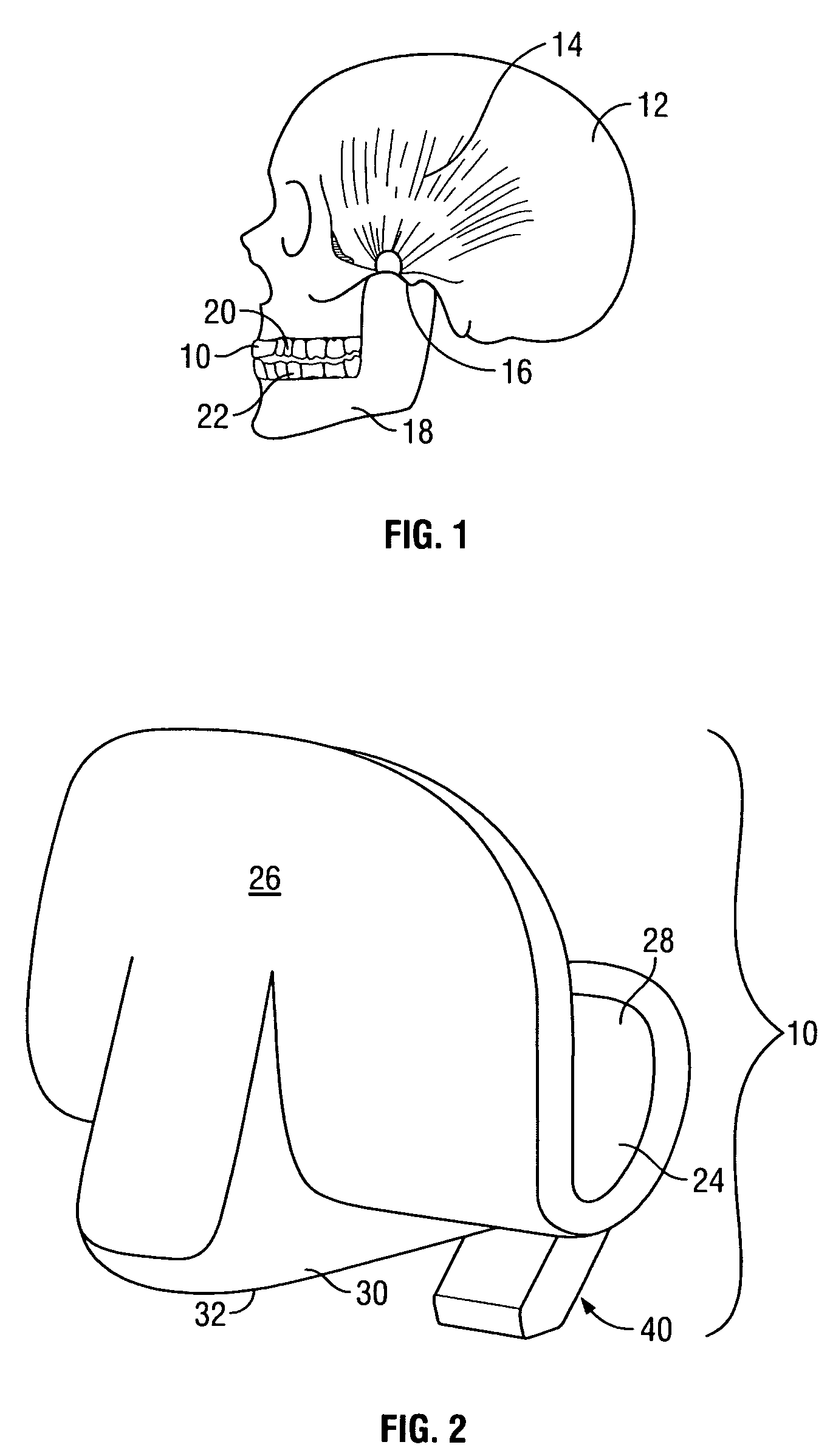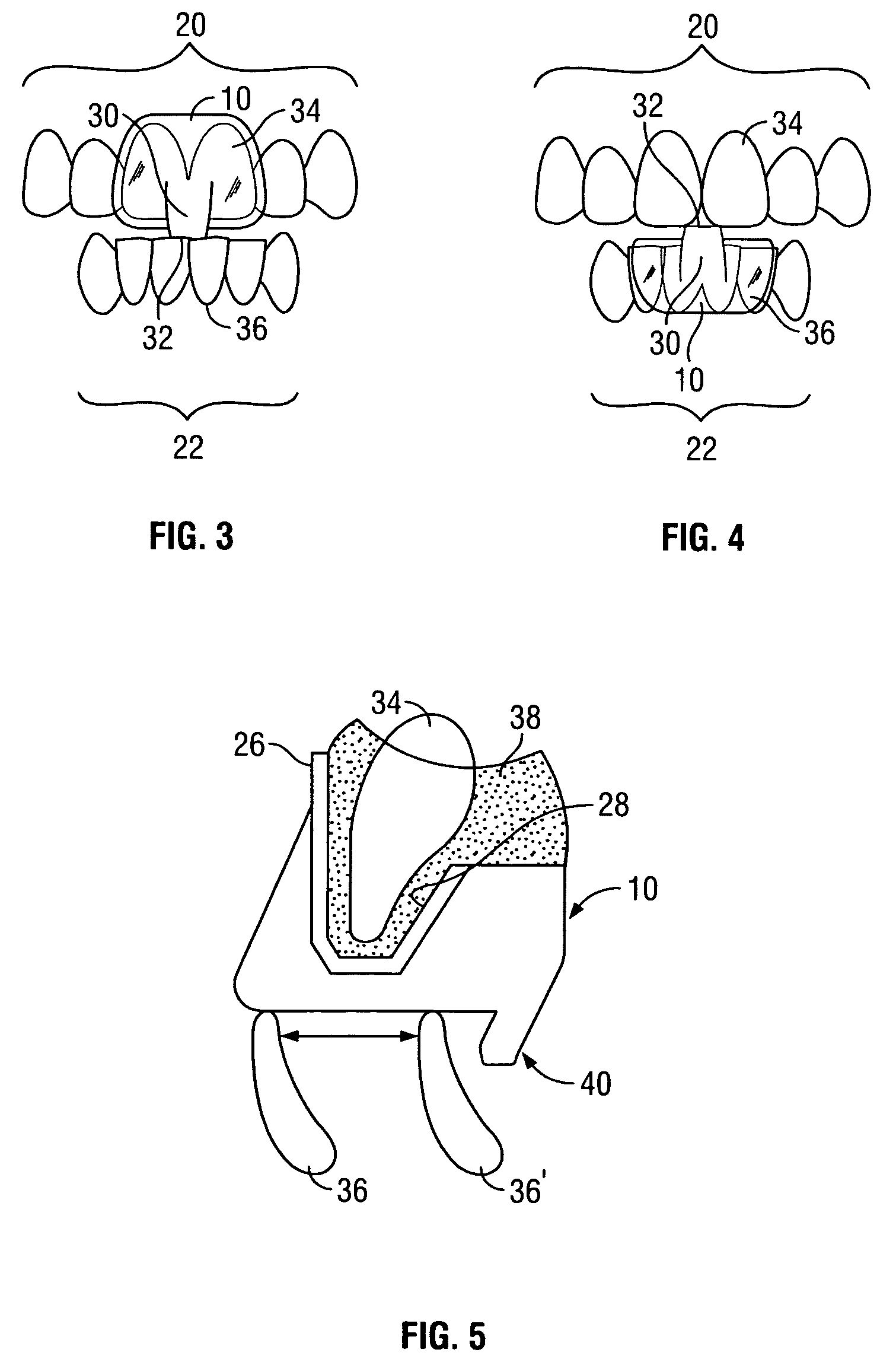Intraoral discluder and method for relieving migraine and tension headaches and temporomandibular disorders
a technology of intraoral disclusion and temporomandibular disorders, applied in the field of intraoral disclusion, can solve the problems of limiting an individual's ability to think clearly and function effectively, headaches affecting many people every day, and affecting the ability of individuals to relax, so as to reduce the intensity of undesired clenching, inhibit excessive retruding movement of the mandible, and enhance the size of the wearer's pharyngeal air
- Summary
- Abstract
- Description
- Claims
- Application Information
AI Technical Summary
Benefits of technology
Problems solved by technology
Method used
Image
Examples
Embodiment Construction
[0017]With reference now to the exemplary drawings, and particularly to FIGS. 1 and 2, there is shown an intraoral discluder 10 in accordance with the invention. The discluder functions to prevent tension headaches, common migraine headaches, and temporomandibular disorders. With particular reference to FIG. 1, a schematic representation of a human skull 12 is shown, wherein the temporalis muscle 14 extends from the skull to its attachment 16 on the mandible 18. A contraction of the temporalis muscle causes the jaw to close. The discluder prevents the upper teeth 20 and the lower teeth 22 from contacting each other and thereby inhibits undesired contraction of the temporalis muscle.
[0018]As shown in FIG. 2, the intraoral discluder 10 includes a trough 24 having an anterior wall 26 and a posterior wall 28. The trough has a slight arc shape, to match the typical curve of a wearer's upper or lower incisors. A protruding rail or platform 30 projects away from the trough, to define an el...
PUM
 Login to View More
Login to View More Abstract
Description
Claims
Application Information
 Login to View More
Login to View More - R&D
- Intellectual Property
- Life Sciences
- Materials
- Tech Scout
- Unparalleled Data Quality
- Higher Quality Content
- 60% Fewer Hallucinations
Browse by: Latest US Patents, China's latest patents, Technical Efficacy Thesaurus, Application Domain, Technology Topic, Popular Technical Reports.
© 2025 PatSnap. All rights reserved.Legal|Privacy policy|Modern Slavery Act Transparency Statement|Sitemap|About US| Contact US: help@patsnap.com



